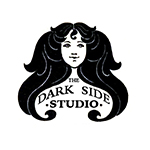Almost Spring Session 2023
Class Recordings
Intentional Improvisation
Intentional: done on purpose, deliberate.
Improvisation: the act of creating and performing spontaneously or without preparation.
I’ve included a link to the Spotify playlist, my notes, as well as the class recording. We did a lot in an hour, so take your time working the material - you could literally spend hours working each of the elements we covered, and that would be just scratching the surface!
Have fun, and let me know if you have any questions,
Audra
The song we used in the second half of the class is ‘Us’ by tiny Deaths, it’s on the Spotify playlist linked below.
From class::
Through line - part 1
Setting your tool box, movement vocabulary or guidelines to work with FOR THAT PIECE.
Using contrast (providing variety).
What are you going to focus on? What (kind of) movements will you use? How will you use Space, Time, Weight?
How will you work with (or against) the music?
Form
Form is the arrangement of material, the shaping or structure of the piece.
Beginning, middle, end.
Phrases.
Sections. How is the new section different than the previous section. Pull apart those differences.
Through line - part 2
Patterns - patterns within the music, patterns in your movement (using repetition). You could also consider these kinds of patterns as being part of your Form.
Extra ideas we didn’t get to:
As you get more comfortable with setting a toolbox, you can begin to pull many aspects into your toolbox - mood, dynamics, how you’re going to approach phrasing, how you’re going to work with the music.
But at the start, practice just using your toolbox first. Then try just working with another aspect and don’t focus too much on your toolbox use.
Patterns
Patterns are fun to play with and are something you can start to experiment with, before you include them in improvisation play. You can think about how you can represent patterns in the music in different parts of the body (I mentioned that in class).
You can also think of sections as patterns, or the way the phrases are shaped as patterns.
Rhythmic and melodic patterns are also great things to work with in improvisation.
The more you can find patterns in the music, the more material you have to feed your movement choices!
Divide up your space:
A fun and fairly simple way to work with dynamics or mood would be to divide your space into two sections (left to right, front and back, diagonally, it doesn’t really matter). Once you have divided your space, assign each space a dynamic - these should be high in contrast, and specific. Which brings me to my next point…
Be specific, and use action words:
The more specific you are with your terms, the more specific your body can be.
Soft isn’t specific enough. Soft like a baby’s cheek (which is soft, but doesn’t actually help cause it’s not an action word), versus soft like a gentle breeze (which is specific but how gentle and continuous keeping a silk veil aloft, or gentle and coming in puffs and moving leaves and small sticks - with those two qualifiers I think you can see that I’ve created two quite different qualities).
If you’re working with improvisation as performance, think about your GAZE. What do kind of gaze fits your toolbox? How are you going to interact with the audience?
Shimmy Lab
Dark Side Boot Camp
Arm undulation focus
Week 1 (03/22/23)
Week 2 (03/29/23)
Week 3 (04/05/23)
More work on our drill,
Week 4 (04/12/23)
Fluid & Funky Phrases
Week 1 (03/22/23)
Week 3 (04/06/23) - Snaking with some surprising positions and pathways. Music: Tebanasu by Nowfeel (on Mixtape 26 on Spotify)
Week 4 (04/13/23)
Creative Movement
Week 1 (03/22/23) BODY
Working with Posture, Gesture and Posture-Gesture merger
Week 2 (03/30/23)
Reviewing posture, gesture and posture-gesture merger.
Still shapes (according to Laban) - Pin, Wall, Ball, Screw, Pyramid
I mentioned a choreographer who used lines - here is William Forsythe’s improvisational techniques.
Click on the video to go to the YouTube page, where in the video description, there is a list of the timestamps. Any of the sections are interesting, but I was specifically thinking of the work on ‘lines’…
Week 3 (04/06/23)
Reviewing the Still Shapes.
Modes of Shape Change - directional (arc-like or spoke-like)
Week 4 (04/13/23)
A working class with the body concepts we’ve covered this session.
